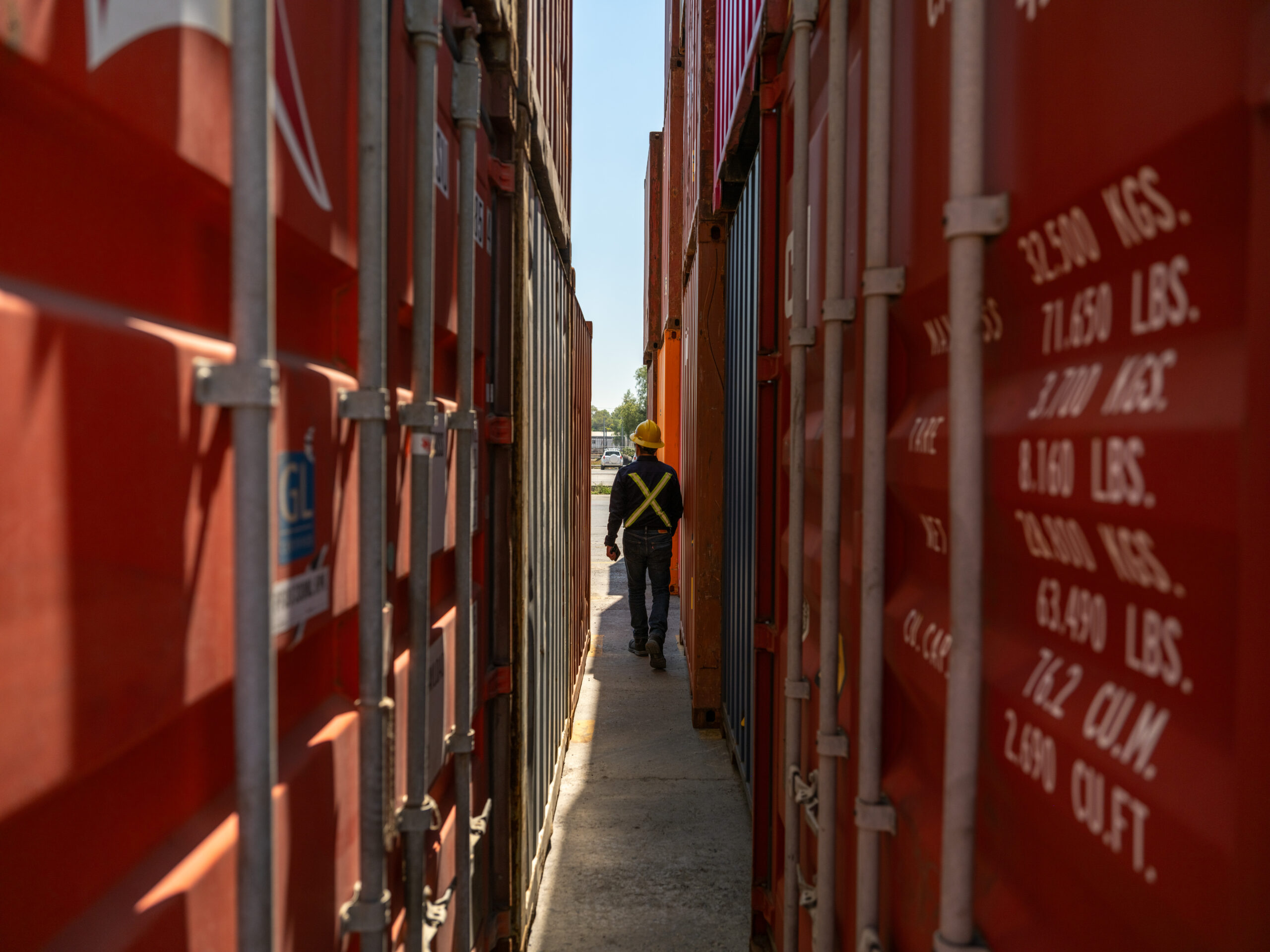
The Trump administration’s aggressive use of import tariffs to advance a highly nationalistic economic and political agenda is imposing costs on consumers and businesses in the United States and abroad. Depending on the extent of retaliatory measures, the greatest potential for damage internationally is faced by the companies, industries and countries most closely integrated with the U.S. economy: Canada, Japan, Mexico, South Korea and the United Kingdom.
Despite the uncertainty caused by successive but inconsistent announcements involving the new levies—and a pending U.S. Supreme Court decision on the legality of the measures—Latin America is unlikely to be greatly impacted, and depending on what concessions President Claudia Sheinbaum obtains, even Mexico’s harm may be manageable. In July, the International Monetary Fund projected 2025 GDP growth rates of 2.3% for Brazil, 0.2% for Mexico and 2.2% for Latin America and the Caribbean. Though modest, these figures were revised up from its April forecasts, and its projections for 2026 were not revised down.
Tariff-related uncertainty is disturbing the investment and marketing plans of export-oriented firms in Latin America. Yet just as was the case in 2018-19, when Trump imposed tariffs on steel and aluminum and on most imports from China, and then China and other major countries retaliated mainly against U.S. farm exports, the new U.S. tariffs and their global repercussions are creating market opportunities for many of those firms.
Trump’s tariff decisions
President Trump has justified the emerging tariff regime on the basis that the yawning U.S. foreign trade deficit in goods and services—$904 billion in 2024, nearly double that in 2016, the first time he won the presidency—must be reduced to encourage a revival of domestic manufacturing and more resilient supply chains.
If so, Trump should not have tariffed most countries in Latin America, because Mexico aside, the United States runs a goods-and-services trade surplus with the rest of Latin America that averaged $106 billion during 2020-24. This total includes minor deficits with Bolivia, Costa Rica, Ecuador and Venezuela, imports from which now incur a 15% tariff, plus Nicaragua at 18%.
Imports from Brazil have been slapped with a whopping 50% tariff, even though U.S. exports to Brazil have exceeded U.S. imports in every one of the last dozen years. In 2024, the U.S. registered a $29 billion goods-and-services trade surplus with Brazil. Trump justified the punishing tariff by citing unfriendly policies, practices and actions, including the “political persecution” of former President Jair Bolsonaro.
Imports from Mexico, with which the U.S. registered a $176 billion goods-and-services deficit in 2024 (nearly triple the imbalance in 2016) are taxed at 25%, though goods covered by the USMCA treaty continue to enter duty-free. Rather than mentioning this rapidly widening trade deficit, Trump justified this tariff by citing the damage done by “illegal aliens” and illicit drugs entering through the southern border.
Imports from all other countries in Latin America are charged 10%, the lowest U.S. tariff now charged universally.
In addition, Trump has imposed tariffs on certain goods no matter their provenance. These include 25% tariffs on imports of autos and parts, 50% on copper imports, and tariffs on steel and aluminum imports, including many products containing those metals, now hiked to 50%.
Impact on Mexico
Over 80% of Mexico’s merchandise exports go to its northern neighbor, hence its vulnerability to U.S. tariffs. While it appears that most of the 85% of Mexico’s exports that enter the U.S. under the USMCA will likely maintain their duty-free access, there are two major exceptions.
Mexico has not been spared the universal U.S. tariffs on steel, aluminum and copper imports, such that those Mexican industries are suffering. The country is the third-largest supplier of steel, aluminum and copper to the U.S., so the pain of lost sales is beginning to be felt.
President Sheinbaum’s team has been negotiating a discount to these and other tariffs in return for taking steps to address Trump’s demands that, beyond doing more to crack down on drug trafficking and to control migration, Mexico should discourage the flow of cheap Chinese goods that are entering the country and then making their way north.
The government has already shut down over 1,000 “phantom” Asian steel mills—storage buildings that provide cover for imports from China and other countries that may be rerouted to the U.S.—and lately has offered to raise its own tariffs on China and other Asian countries, including up to 50% on their cars, auto parts, steel and textiles.
Mexico’s automotive exports are subject to a universal 25% tariff unless they embody more than 40% of U.S. content, in which case the tariff does not apply to that portion of their value. However, most made-in-Mexico vehicles do not meet that threshold. Meanwhile, Trump has agreed to cut that tariff to 15% as part of a deal with Japan, and the EU has negotiated a similar concession yet to go into effect.
Therefore, the 25% tariff has now put Mexico’s thriving auto industry at a disadvantage compared to Japan, and soon also to Europe. Even U.S. automakers like General Motors and Stellantis, which have factories in Mexico, have taken a hit on their profits in recent months primarily due to the new tariff.
The Brazil tariff
Brazil is the second-most affected country by the new tariffs, even though the country’s exports to the U.S. represent a mere 12% of total exports. Fortunately for both countries, the punitive tariff on Brazil was accompanied by a long list of exceptions, including for imports of orange juice, minerals, hydrocarbons, wood pulp and aircrafts. Since U.S. exemptions do not apply to beef or coffee, two key Brazilian exports, nor to ethanol or tropical fruits, authorities have estimated that a little more than one-third of the country’s exports to the U.S. will be affected by the 50% tariff.
The tariff on coffee will most likely backfire. Thirty percent of U.S. coffee imports come from Brazil, the world’s top exporter of arabica. U.S. consumers will have to pay up for the privilege or get used to harsher-tasting coffee. Two of Brazil’s three biggest beef producers have large U.S. operations, such that a drop in imports that would raise prices in the U.S. should end up benefiting them.
Tariffs on the rest of Latin America
Chile, Peru, and to a lesser extent Mexico could have been seriously harmed by the 50% U.S. tariff on copper. Since the tariff is meant to help boost U.S. output of semi-processed copper and of copper-containing products (e.g., copper wire, cable, tubes and rods), it does not apply to unprocessed or refined copper, which is mostly what Chile and Peru export.
Most other Latin American countries, as mentioned, are facing uniformly low 10% tariffs. Given their relatively small dependence on the U.S. market, their companies should be able to cope with and adapt to the new tariffs.
Moreover, the higher U.S. tariffs applied to China and Mexico, plus China’s retaliatory decisions against the U.S., are motivating the diversion of trade to other countries, creating opportunities for Latin America. It is worth remembering that after the tariff spat between China and the U.S. in 2018-19, China turned heavily to Brazil and Argentina for soybeans and meat, such that Brazil became the top soybean supplier to China.
There are reports that China’s soybean importers are now boosting purchases from Argentina and Uruguay to fill the supply gap left by the absence of U.S. shipments in the wake of renewed Chinese retaliation. Mexico is working on lessening its dependence on U.S. beef, so it is making arrangements to source more beef from Brazil. And there is little doubt that the recent EU decision to put its long-dormant free-trade deal with Mercosur up to a likely successful vote was incited by Trump’s protectionist measures. Once enacted, it will open up export opportunities throughout Europe.






